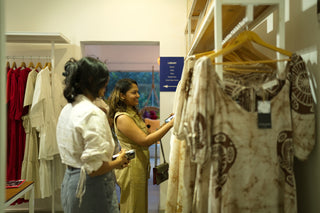
Modern Takes on Traditional Sri Lankan Batik
Sri Lankan batik has long been celebrated for its intricate patterns, vibrant colors, and deep cultural significance. Traditionally, this textile art form is rooted in ancient dyeing techniques, where wax is used to create patterns on fabric before it's dyed. Over the years, however, this heritage craft has evolved, taking on new dimensions as modern designers reimagine batik for contemporary fashion and design.
In today’s world of sustainable fashion and conscious consumerism, the blend of tradition and innovation in Sri Lankan batik has become even more relevant. Let’s explore how modern takes on this art form preserve its cultural heritage and redefine its place in the fashion world.
The Roots of Sri Lankan Batik
Batik was introduced to Sri Lanka centuries ago during Dutch colonization, but its roots trace back to Indonesia, where it is a long-standing cultural tradition. In Sri Lanka, batik took on its own identity, with local artisans incorporating native flora, fauna, and cultural symbols into their designs. Traditionally, batik was a labor-intensive process, requiring hand-drawn designs using wax before multiple layers of dye were applied to achieve the final look.
Contemporary Batik Designs
The modern resurgence of batik in Sri Lanka is marked by bold experimentation, creative flair, and a deep connection to sustainability. Today’s designers are infusing traditional techniques with contemporary aesthetics, creating a beautiful fusion of old and new. You’ll see oversized motifs, abstract patterns, and even minimalist designs in modern batik collections—departing from the intricate, busy patterns of the past.
Collections like Perennial by Celeste Mendis exemplify this modern approach. For instance, the batik pieces in this collection highlight bold patterns and natural dye hues, reflecting both heritage and modernity. Instead of the traditional heavy wax application, designers are playing with lighter, more flowing applications of wax to create abstract and soft patterns. A fresh, minimalist take on an ancient craft, appealing to modern aesthetics without sacrificing its traditional roots.
Sustainability and Ethical Craftsmanship
As eco-conscious fashion continues to gain traction, Sri Lankan batik offers a natural fit for the movement. The process of batik making itself is sustainable, using natural dyes and fabrics, such as cotton and silk. This is complemented by the artisanal nature of the craft, which aligns with the slow fashion movement. In fact, many modern batik designers are ensuring that their processes remain environmentally friendly, from using non-toxic dyes to employing ethical production practices that support local artisans.
Batik has also become a tool for social empowerment, with many designers working alongside rural artisans to ensure fair wages and preserve this craft for future generations. By incorporating batik into contemporary designs, these initiatives help support local economies while keeping cultural traditions alive.
Batik Beyond Fashion
While batik has traditionally been used in clothing, today’s designers are expanding its applications beyond fashion. Modern batik can be seen in home decor items, from cushion covers to wall hangings and even in large-scale art pieces. This versatility is another way in which batik is being adapted to contemporary lifestyles, proving its enduring appeal.
A Global Appreciation
Modern takes on Sri Lankan batik have not gone unnoticed on the international stage. Designers are showcasing batik on runways and in exhibitions worldwide, bringing a global audience to this local art form. As batik continues to evolve, it’s clear that its future is bright, with more designers embracing the blend of heritage and innovation.
Sri Lankan batik stands as a beautiful testament to the blend of tradition and modernity. With sustainability at its core and creativity driving its evolution, contemporary batik designs are bringing this age-old art form to new audiences. Whether seen on the runway or in our homes, batik is here to stay, and its modern interpretations ensure that its cultural legacy continues to thrive in a fast-changing world.
Through collections like Perennial at Celeste Mendis, we see how this craft continues to inspire new generations of fashion enthusiasts, offering a modern twist on a beloved tradition.



